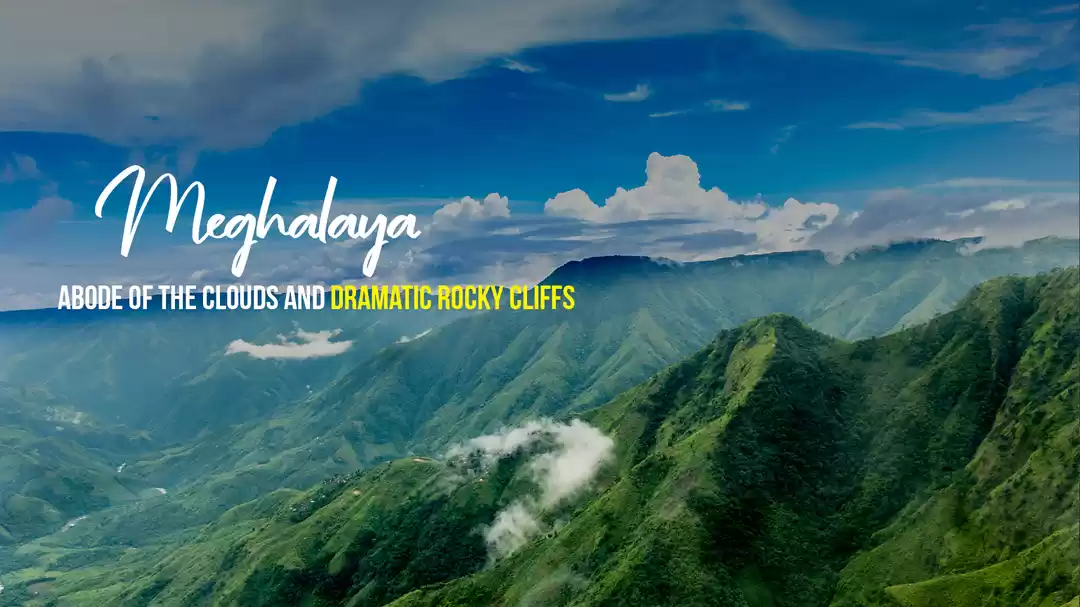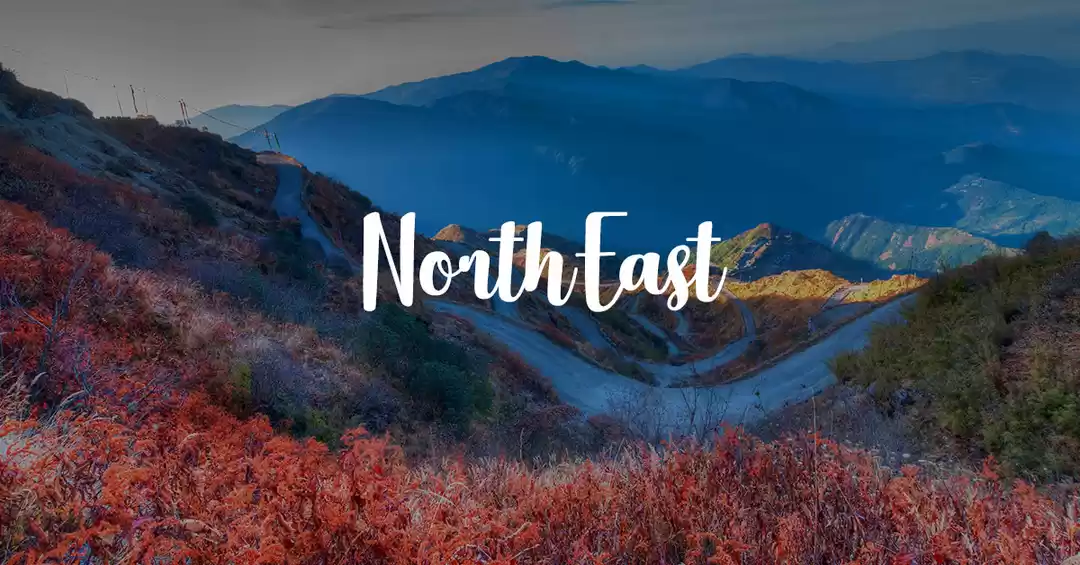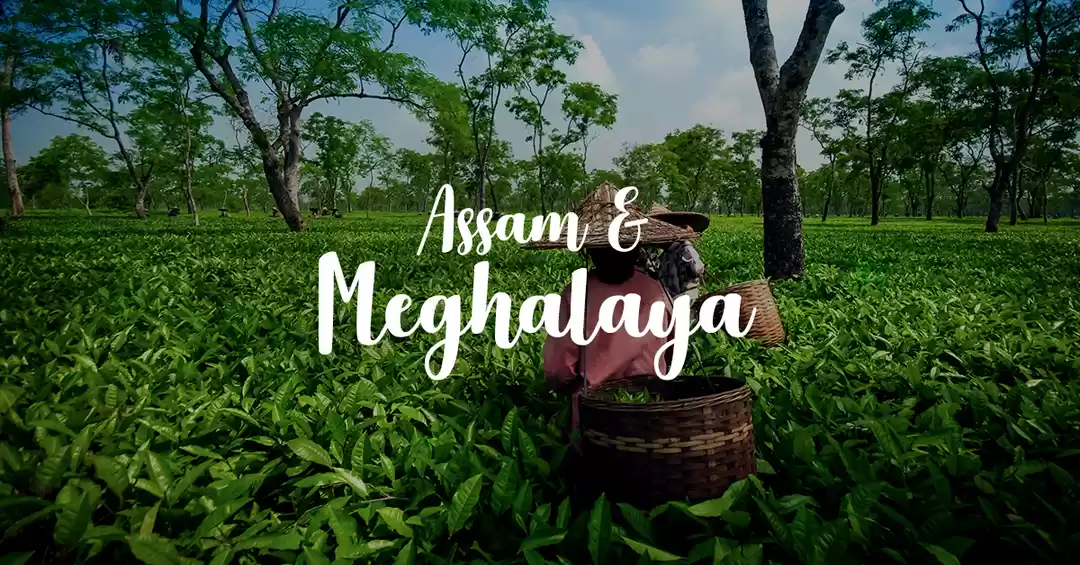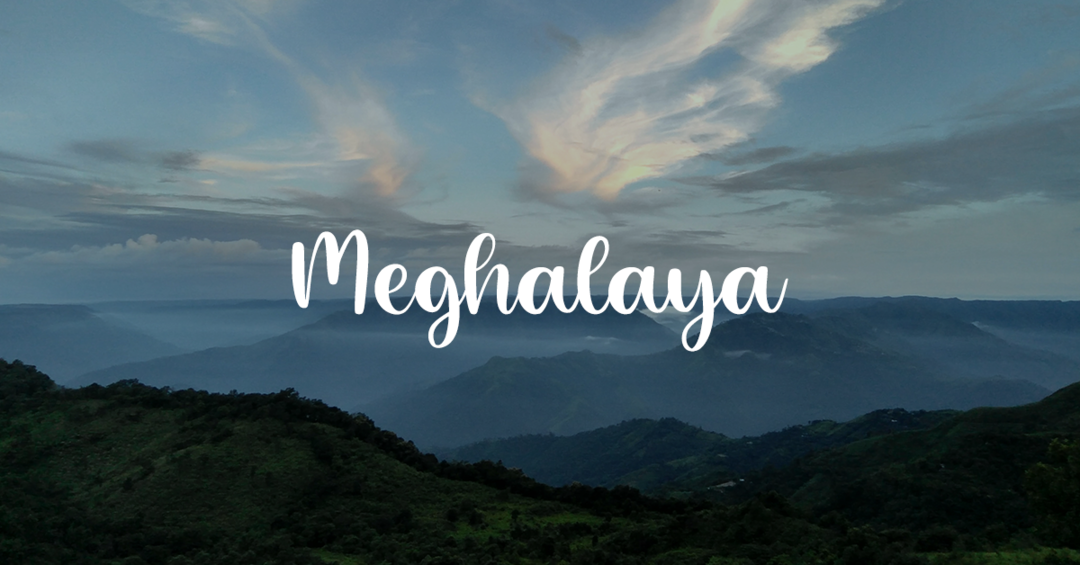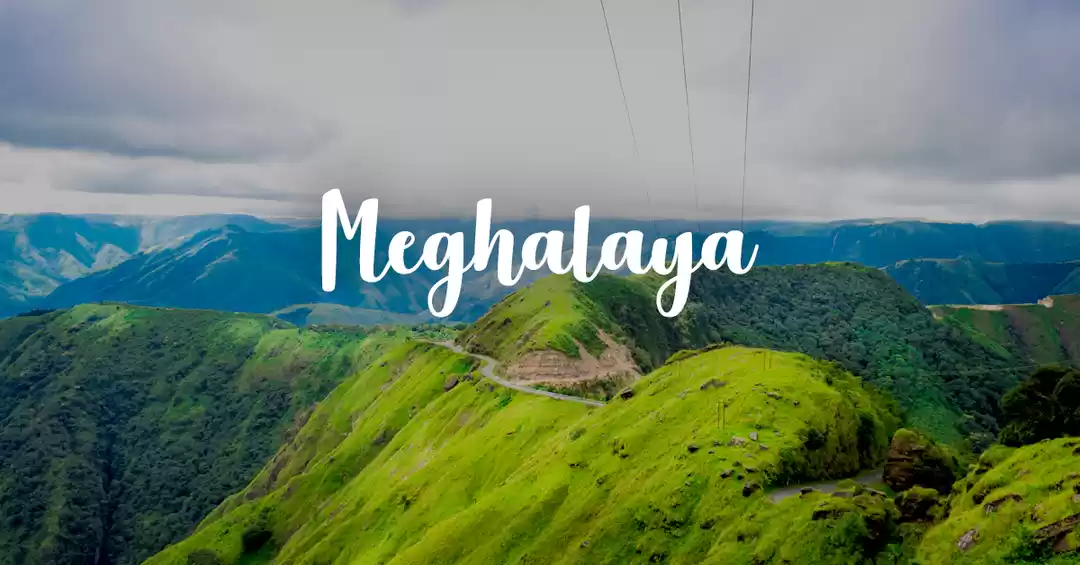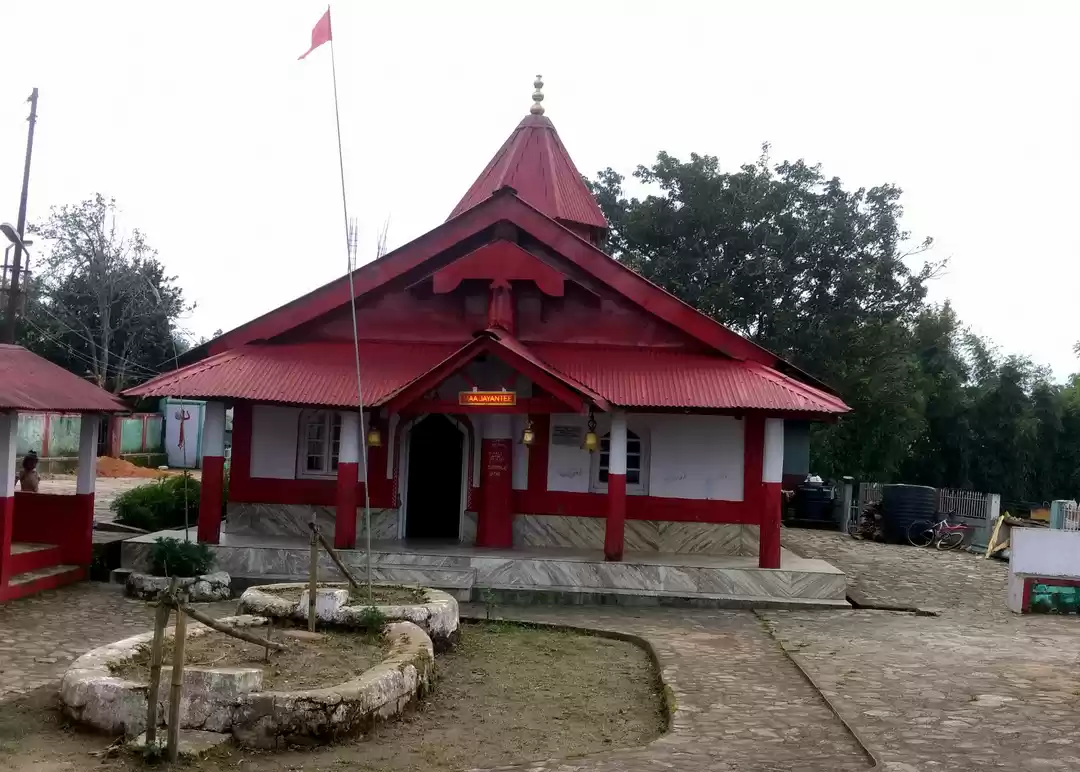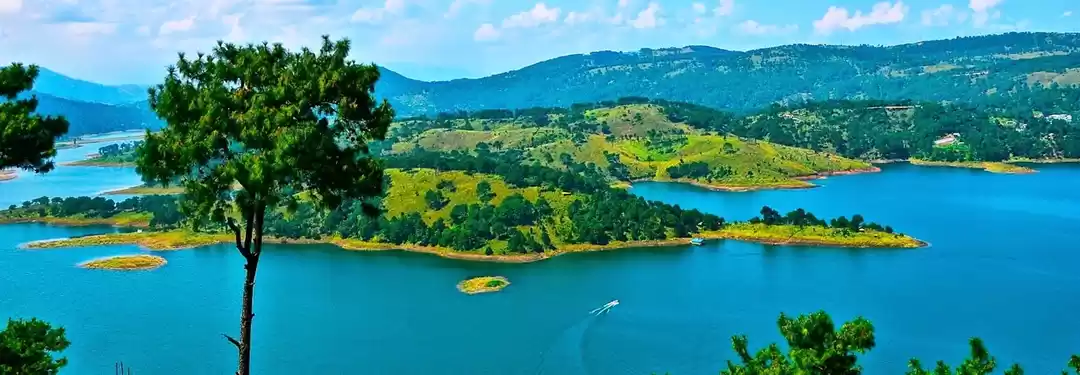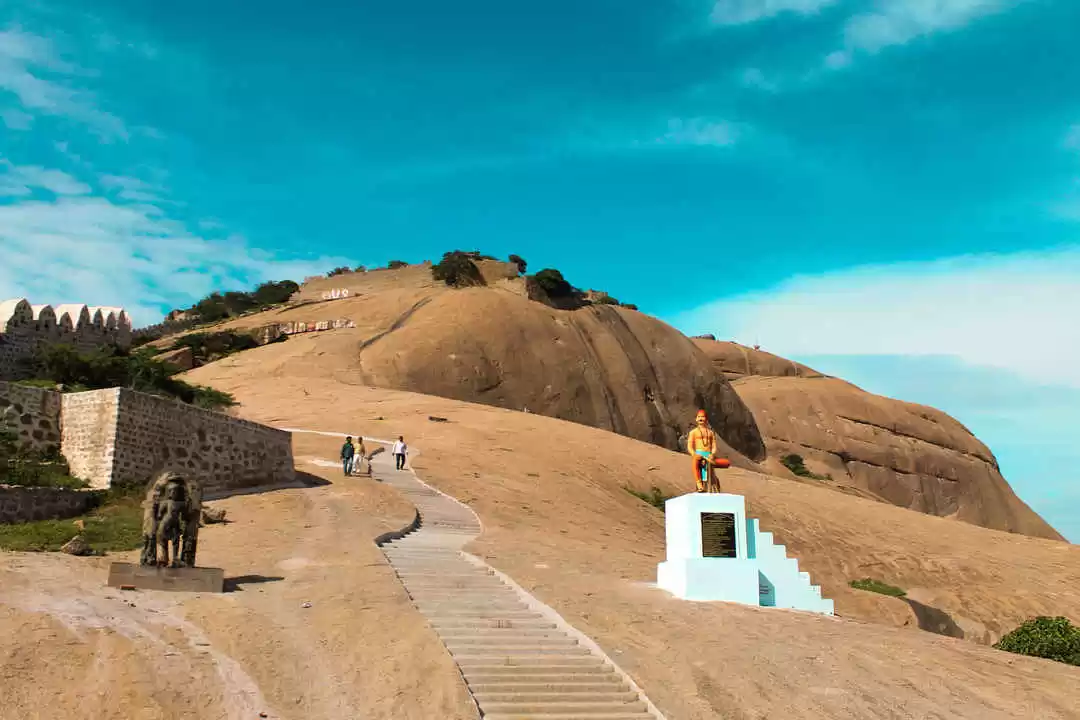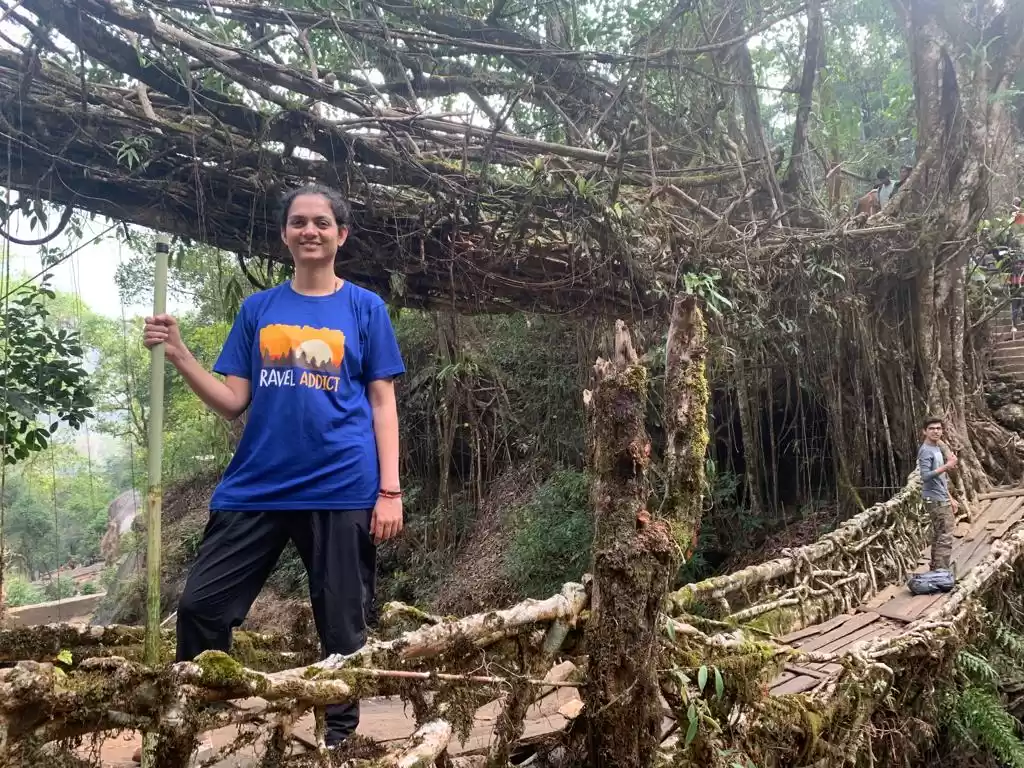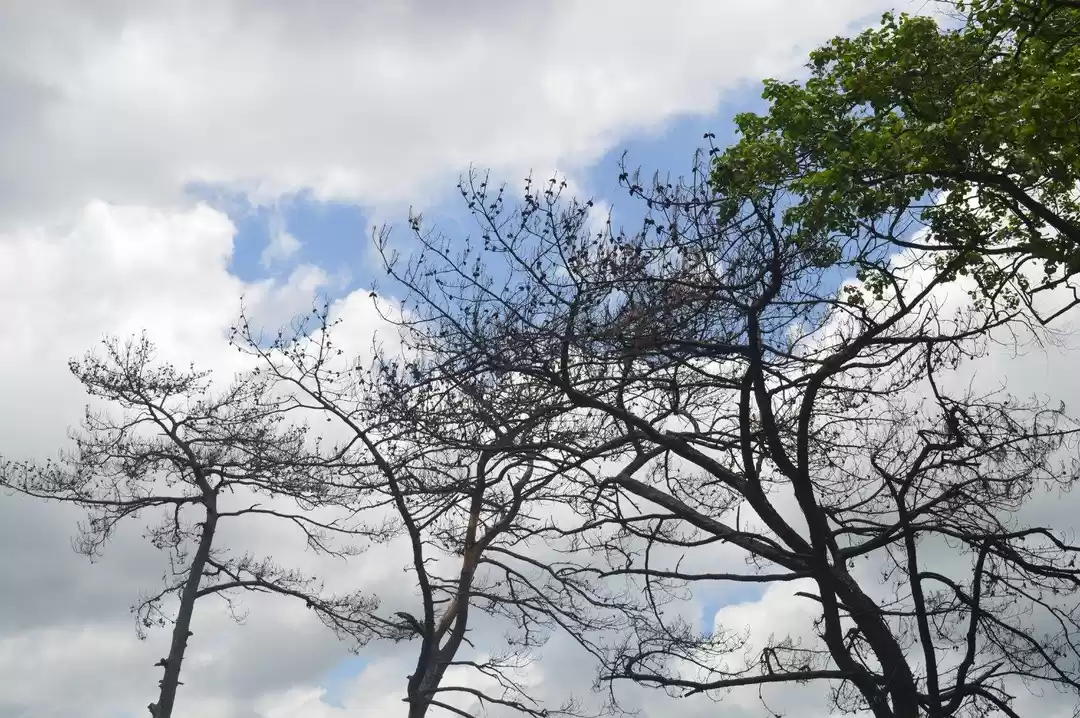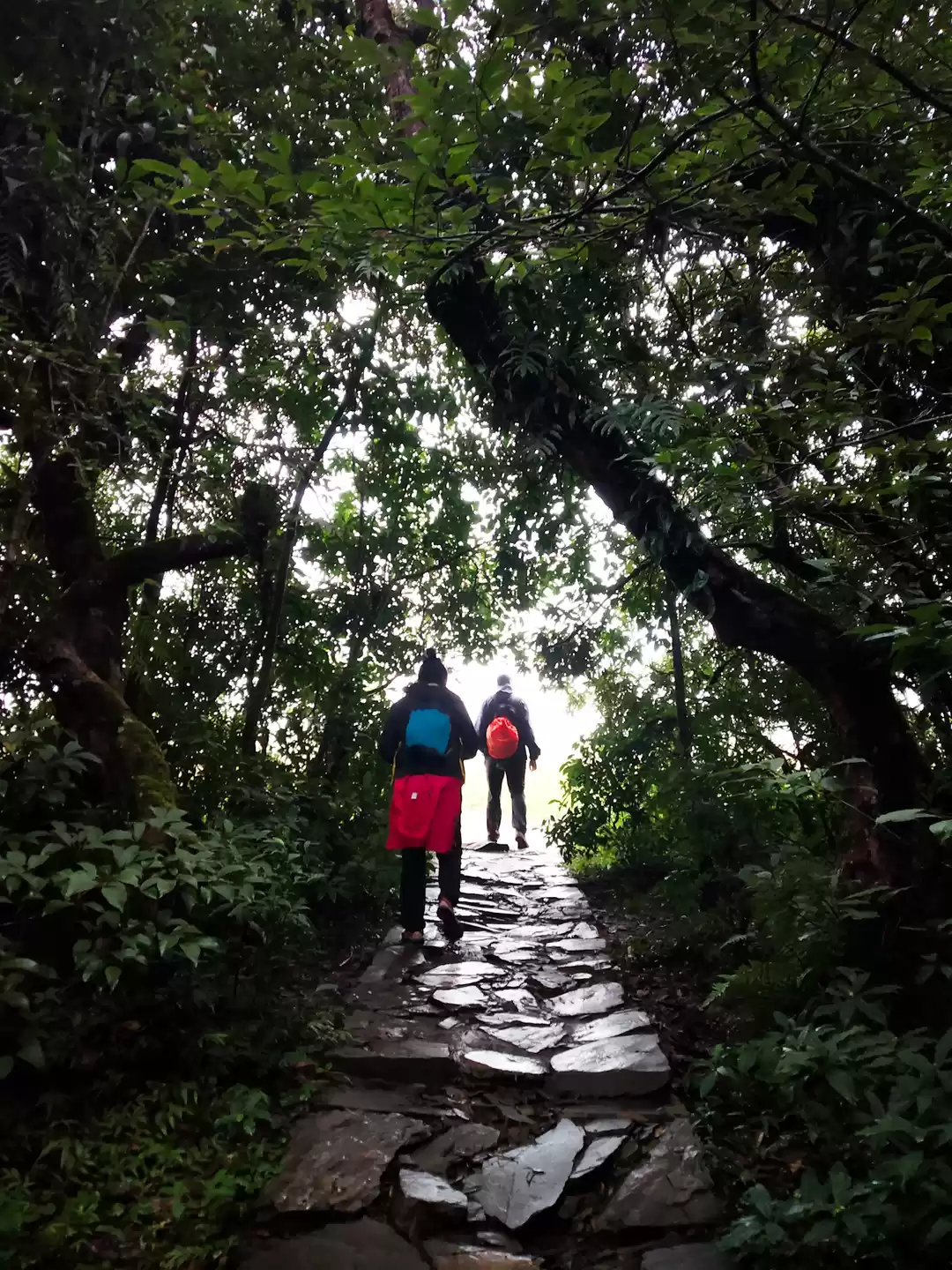
This time around, we set our eyes towards Jaintia Hills, Meghalaya – a relatively unexplored region that boasts of vibrant green landscapes, thundering waterfalls and interesting heritage sites. Our plan is to visit Nartiang village, particularly, the Nartiang Monoliths garden and the unique 15th century Durga temple.
The weekend arrives and we patiently await for the weather conditions to improve as we set off from Shillong. Rain has been pouring relentlessly the last few days and after some re-scheduling, we finally hit the road and hoped for the best.

The Road
The distance from Shillong to Nartiang is around 65 kilometers and takes less than 2 hours to reach by car. Midway of our journey lies Puriang village which serves as the gateway to the Jaintia Hills and while driving past the village, on the left side of the highway, one can experience the panoramic and breathtaking view of the rolling green hills and the expansive green paddy that lies neatly tug at the feet of the mountains like a carpet. This is the famous Sung Valley and we shall cover this destination on our next trip.

Once we reach Ummulong village and at the end of the market place, we take a left turn towards Wahiajer and continued towards Nartiang. On the way, we stop by a viewpoint overlooking the splendid Myntang river at Wahiajer Thwailaroit Fish Sanctuary. Here we can spot a small bridge that leads to a small patch of land where many locals are seen crossing in search for the best fishing spot.

Nartiang


Soon we arrived at our destination and made quick way through Nartiang village and directly to the megalithic site. The site houses the largest collection of monoliths aggregated in a single place. History tells us that Nartiang used to be the summer capital of Jaintia Kings of the Sutnga state during the seventeenth century. The monoliths found here are believed to have been erected during 1500AD and 1835AD by the Jaintia Kings to commemorate legendary Kings and women, battle victories and other glorious events in the Jaintia kingdom. The ‘Menhirs’(Upright Stones) are locally known as ‘Moo(Stones) Shynrang(Men)’ and the ‘Dolmen’(Flat/horizontal Stones) as ‘Moo Kynthai(Women)’.

The tallest Mehnir in the cluster known as ‘Moo Long Syiem’ (King) measures at an astounding height of 8 meters high and an impressive 18 inches thick and is believed to have been erected by the goliath ‘U Mar Phalynki’, a hulk-like man who was a trusted lieutenant of the Jaintia King and he erected the humongous monolith to commemorate his victory in battle. It is mind-boggling to fathom the human strength and ingenuity involved in the feat of heavy lifting in those days. This megalithic culture of the Khasi-Jaintias bear affinities to those of the Monkhmer of South-East Asia, the Nordic megalith architecture, the megaliths of Great Britain (the Stone Henge) among others and this, often, is a spark for debate as to the anthropological origins of the Khasi-Jaintia tribe.

We spent a good amount of time soaking in this unique experience and admiring these great monuments. Behind this megalithic site is a marketplace where the people of Nartiang and its neighboring villages come to trade; it is basically an extensive arrangement of small booths where vendors put out tables to sell their wares and produce.

Down the road, is another site which is mostly overlooked but has an interesting historical significance. The structure in question is a walk-bridge over a rivulet, built out of a single stone slab and placed there horizontally from each end and according to the old legend, a royal elephant was made to cross this stone bridge and while doing so it caused the stone slab to tilt over to the other side by a few inches and this displaced stone slab stayed like this to this very day.

The Temple
About 3 Kilometers from Nartiang village is another famous tourist spot with its own unique history spanning a period of more than 500 years. The Nartiang Durga Temple was constructed by the Jaintia Kings on conversion to Hinduism. It is said that the temple construction was initially fashioned like a typical Khasi-Jaintia house having a central wooden pillar (dieng blai or God’s Pillar) and the roof in thatch, later, a corrugated tin roof. The temple is one of the holiest sites for devotees of the Shaktism sect of Hinduism. The tribal Hindus in the Jaintia Hills of Meghalaya believe that this temple is the permanent abode of Goddess Durga. The temple draws a large number of pilgrims from all over the country on occasions of Durga Puja.

The temple has an idol of the Goddess Durga, the main deity of the temple. But it also has a Shiva temple situated in nearby the premises of the main temple. One can also view the Myntang river flowing below as the temple is situated on the top of the hill right above the river. The temple is also home for the ancient guns of the Kings which makes it an engrossing place for archaeologists and historians.
The marbled temple floors are immaculate; bright sunlight and clean air enter freely through the open windows. The temple also houses the ‘Boli Garbha’ or the ritual sacrificial pier which is supposedly connected to the river by an underground tunnel. This is where human sacrifices were performed to celebrate Ashtami nights during Dusshera. The sacrificial beheading would take place just outside the main door of the temple. The human head would tumble down the tunnel into river. This horrific ritual was later banned by the British Government when the Jaintia Kingdom fell to the hands of the British. Today, goats and ducks are sacrificed on Ashtami day and human masks and dhotis are put on the animals before the sacrifice. This practice still continues till date. It is interesting to note that the priest at this temple is a Maratha kshatriya and not a Brahmin. When the King sanctioned for a priest to maintain his new Durga temple, no Brahmin was willing to take up the task because it involved human sacrifice. The priest who now serves at the temple is a 30th generation descendant of that Maratha priest. Priesthood in this case, was passed over from one generation to the next.
Conclusion
Nartiang indeed is a place of historic and cultural significance and bears testimony to the confluence of cultures - local traditional beliefs and Hinduism. A lot of lessons and good practices can be gleaned in terms of co-existence of the human race irrespective of ethnicity and religious beliefs and this is something which the modern world desperately needs today.

Follow us on Instagram @beautifulshillong






